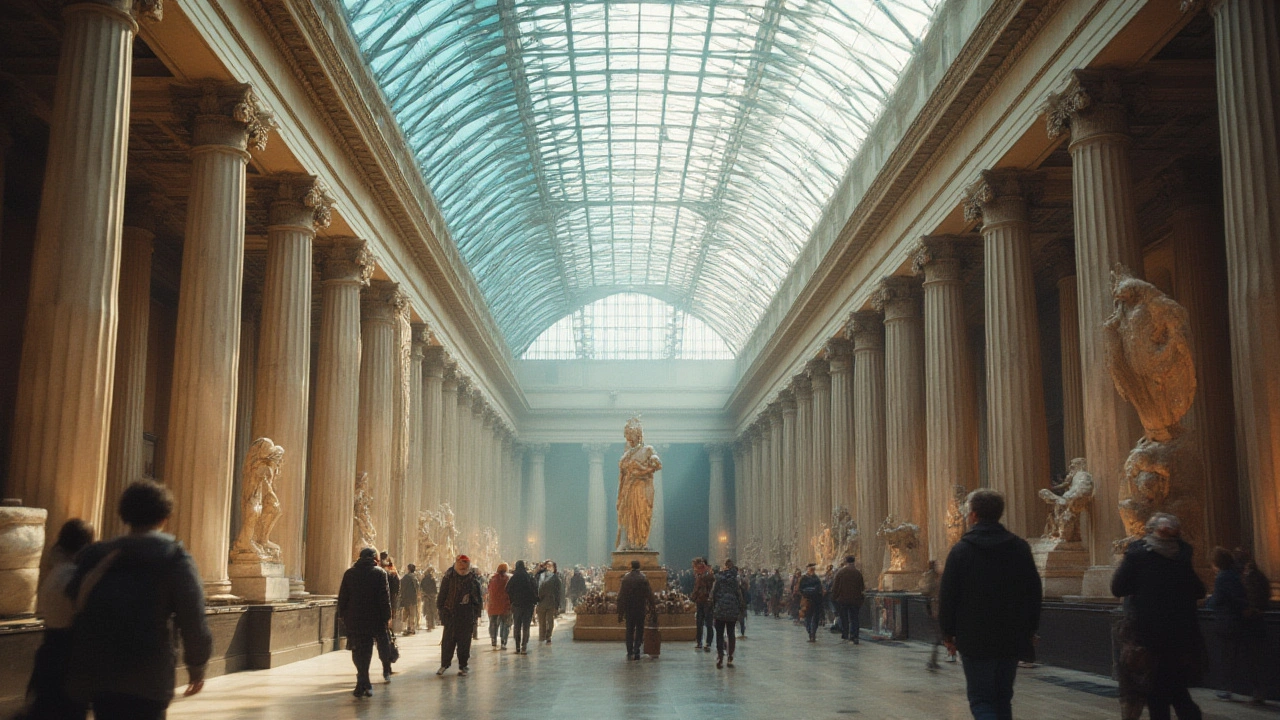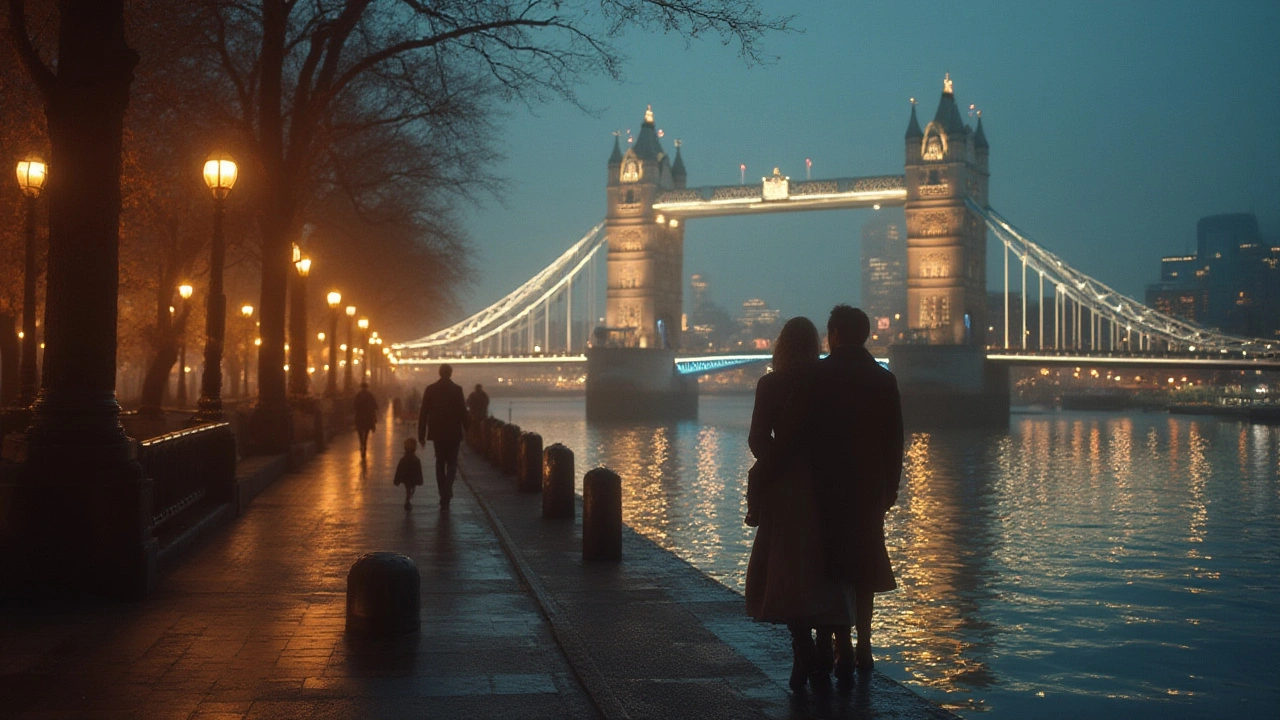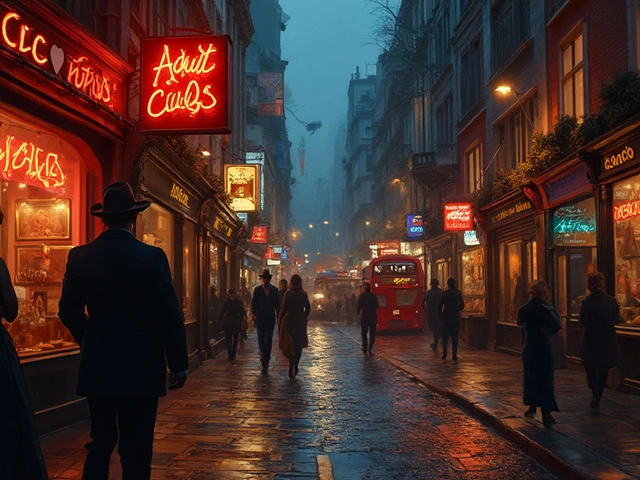If you’re in London, you can’t really escape the shadow of the Tower of London. It’s right there on the north bank of the Thames, wrapped in layers of history older than any double-decker bus route. This isn’t just some old grey castle—locals know it as one of the city’s most gripping stories in stone, from royal drama to chilling mysteries you won’t hear on a standard sightseeing bus tour.
For anyone living or working in London, the Tower is more than a postcard. You’ve probably strolled past it on a lunch break or glimpsed its walls during a rainy commute on the District line. Maybe you’ve queued up for the Crown Jewels or joined a last-minute ticket scramble on a hot July day. But how many have walked the White Tower’s winding stairs, actually listened to the Yeoman Warders, or noticed how the ravens size up the selfie sticks?
Thinking of a day out? Weekdays tend to be quieter, and if you’re a City professional, you’re only a ten-minute walk from Tower Hill station. Kids or friends in tow? The Tower mixes proper chills and fun—nothing like standing in Traitor’s Gate to get everyone asking questions. And if you’re the type who loves a good story, Londoners swear each Yeoman Warder tour offers a different twist. This isn’t just for tourists; it’s a slice of real London, open to everyone who isn’t afraid of a bit of history (and maybe the odd ghost tale).
- The Fortress at the Heart of London
- Famous Stories: Prisoners, Plots, and Beheadings
- The Crown Jewels: Glitter, Security, and Local Myths
- Ravens, Beefeaters, and Living Traditions
- Visitor Tips: Tickets, Timing, and Getting Around
- How the Tower Shapes London Today
The Fortress at the Heart of London
The Tower of London sits in the middle of the capital’s action, just next to Tower Bridge and a stone’s throw from the City’s skyscrapers. Built by William the Conqueror in the 1070s, the White Tower was the core that started it all. Back then, it was meant to control London and show off power. These days, it’s a symbol Londoners instantly recognize—just look at any major brochure or those endless Instagram shots of the Thames on a cloudy morning.
The Tower has been a royal palace, armory, prison, treasury, even a zoo. Henry III added sturdy defenses, while Edward I ringed it with thick walls and a moat. Don’t expect muddy trenches now—the moat was drained in the 19th century so people using Tower Hill wouldn’t have to dodge the smell. Instead, you’ll spot grass where the moat was once filled with water from the Thames.
Modern Londoners are often surprised at how the site keeps evolving. Yes, you’ll see ancient arrow slits and murder holes, but you also get clear signs pointing towards Tower Gateway DLR, contactless barriers, and a Costa at Tower Hill tube. The mix of old and new makes the Tower feel just as much a part of daily London as Pret or a trip on the Overground.
If you want a no-nonsense timeline of the Tower, check this out:
| Year | Major Event |
|---|---|
| 1078 | Construction of the White Tower begins |
| 1200s | Outer walls and moat completed |
| 1303 | Major robbery of the Crown Jewels |
| 1834 | Royal Menagerie (zoo) closes |
| 1941 | Bomb damage in WWII |
| 1988 | Becomes UNESCO World Heritage Site |
One quick tip: locals love walking the riverside route from London Bridge to Tower Pier, especially at sunset. You get a perfect view of the Tower framed against the Shard and City Hall—a mix you simply can’t find anywhere else. And if you’re a history buff or just want a quiet spot, try the less-travelled path in the gardens outside the main entrance; you’ll dodge the crowds and get a proper sense of how this fortress really dominates London’s skyline.
Famous Stories: Prisoners, Plots, and Beheadings
The Tower’s got a reputation that really sticks. Ask anyone in London about the Tower of London, and they’ll mention beheadings or famous prisoners, not just the Crown Jewels. It’s all rooted in actual events—this fortress was a lock-up for everyone from kings to unlucky wives, and even a few spies during the war.
First up, Anne Boleyn—probably the most gossiped-about prisoner. She walked through the Traitor’s Gate and never made it out alive. Her execution in 1536 turned the Tower into a symbol of royal ruthlessness. You can stand near the very spot where it all happened, now marked by a glass memorial on Tower Green where private executions took place away from gawking crowds on Tower Hill.
Sir Walter Raleigh, the famous explorer, was practically a Tower regular. He spent 13 years here, bringing his family along for some of it and even working on his science experiments. No internet, just his own ideas and rumors about hidden gold. Some say he grew tobacco in the Tower garden—the start of a proper London obsession.
It wasn’t just about who lost their heads. Plenty of big names spent serious time as prisoners:
- Guy Fawkes (he of Bonfire Night fame) was questioned and tortured here after the failed Gunpowder Plot of 1605.
- Elizabeth I ended up here before she became queen, accused of plotting against her older sister, Mary. Imagine being locked up in the same city where you might someday rule.
- Even during World War II, spies like Josef Jakobs were held and, in his case, executed by firing squad—the last person to be executed in the Tower, in 1941.
Check out these real stats from the Tower’s books:
| Period | Number of Recorded Executions | Famous Figures |
|---|---|---|
| Tudor (1485-1603) | ~112 | Anne Boleyn, Catherine Howard |
| Stuart (1603-1714) | ~21 | Guy Fawkes, Lady Jane Grey |
| WWII (1939-1945) | 12 | Josef Jakobs |
Here’s one local tip: if you visit, ask Yeoman Warders for their favourite Tower tale—Londoners know they throw in the odd spooky detail or secret story you won’t find in the official brochures. These legends and facts make the Tower of London stand out from the usual city sights. A bit gruesome, a bit fascinating, always unforgettable.
The Crown Jewels: Glitter, Security, and Local Myths
No visit to the Tower of London feels complete without gawping at the Crown Jewels. Locked behind bulletproof glass, this bling is probably the most closely guarded collection in all of the UK—and for good reason. We're talking over 23,000 gemstones, gold so bright it hurts your eyes, and crowns that still appear at every major royal show in London, like coronations and state openings of Parliament.
The big ones you’ll spot on display? The Imperial State Crown (the one the monarch puts on after their coronation), the Sovereign’s Sceptre with its whopping 530-carat Cullinan I diamond, and St Edward’s Crown, which tips the scales at nearly 2.2kg. Most Londoners know it’s heavy because every local school trip tries to guess what wearing it would do to your neck.
Security at the Jewel House is tight. Armed guards from the Tower are always nearby, and you’ll see digital display counters showing the last time the Crown Jewels were checked. There was a disastrous theft back in the 17th century, but since then, nobody’s come close—the main entrance has multiple barriers, separate exits, and CCTV everywhere. Thames river police even keep a watch from boats nearby if there’s a big event.
Locals love swapping myths about secret tunnels beneath the Tower, with stories ranging from hidden escape routes to wild claims about Crown Jewels being swapped for fakes years ago. There’s no proof, but the stories just add extra punch to a visit. Ask any Yeoman Warder and you’ll get a knowing smile and a brand-new version of the legend.
Thinking of timing your visit? The lines for the Jewel House can look scary—especially in summer or around half-term. Mornings are a bit less packed, and if you book a London Pass, you might jump the worst of the queues. Snap a quick look at real numbers below if you’re still not sold on just how much treasure is locked up inside the Tower:
| Item | Count/Weight | Fun Fact |
|---|---|---|
| Gemstones (total) | 23,578 | Includes diamonds, sapphires, and rubies |
| Cullinan I Diamond | 530 carats | Largest clear-cut diamond in the world |
| St Edward's Crown | 2.2 kg | Used for every English/British coronation since 1661 |
Photos are off-limits, so leave the phone in your pocket and take a proper look. It's not every day you see centuries of British monarchy locked in one room, just steps away from Tower Bridge and that busy London skyline.
Ravens, Beefeaters, and Living Traditions
There’s something instantly London about spotting the Tower’s ravens strutting around like they own the place. And in a way—they sort of do. According to legend, if the ravens ever leave the Tower, both the fortress and the country will fall. To stop that from happening, there’s an official Ravenmaster who feeds and cares for at least seven birds (they keep a spare, just in case), not far from the main Tower of London entrance. Most of the birds have their own names and personalities—think Merlina, Jubilee, and Poppy—and you’ll notice they have their wings clipped so they don’t take too much of a holiday.
Then you’ve got the Beefeaters, officially known as Yeoman Warders. These folks aren’t just walking props: each Beefeater is a military veteran with serious years of service. Most live right inside the Tower with their families—imagine calling that medieval pad ‘home’ in the heart of London. You’ll spot them leading tours (highly recommended, by the way), telling stories loaded with dark humour, and rocking those iconic red and black uniforms. They also keep the Ceremony of the Keys going—a centuries-old tradition that locks up the Tower every night at precisely 9:53 pm. Locals know you can book a spot to watch it through the Historic Royal Palaces website, but the tickets tend to vanish faster than Sunday roast at a family pub.
One quirky detail—every November, the Tower hosts the Lord Mayor’s arrival after the big parade, with the ancient ceremony of presenting the city’s monarch with a set of keys. And if you ask any London taxi driver, lots of insiders say the best time to catch the Beefeaters in action is either right at opening or late afternoon, when the crowds thin out and you can actually crack a joke or two.
Quick tip: If you want to snap a pic with a Beefeater, check near the Byward Tower or on duty beside the Crown Jewels. Just be ready with your camera—these guys move briskly and aren’t shy about giving a cheeky London one-liner if you dither!
Visitor Tips: Tickets, Timing, and Getting Around
Don’t make the classic mistake of rocking up to the Tower of London at midday in August expecting a quick in-and-out tour. Even locals get caught out by long queues, especially during school holidays and half-term. If you’re aiming to see the Tower of London without waiting around, the trick is booking tickets online through the Historic Royal Palaces website. Not only does it save you a couple of quid, but it also lets you dodge the walk-up line—just show your e-ticket at the west entrance on arrival. Standard adult entry (as of June 2025) is £33.60, and they offer proper discounts for students, kids under 16, and families.
If you really want to skip most of the crowds, get there for opening (9 a.m. Tuesday to Saturday, 10 a.m. on Sundays and Mondays; last entry is an hour before close). Weekdays are a safe bet—Fridays are usually quieter, even in summer. If you work in the City, take an early lunch and stroll over before the school groups descend. Most Londoners know to avoid Saturdays unless you’re prepared for company.
The Tower takes longer to see than you’d guess. Give yourself at least two to three hours. You’ll want time for everything: Crown Jewels, White Tower, medieval palace, the yard, and a Yeoman Warder tour. The last Crown Jewels viewing is half an hour before closing, so don’t leave this for the end.
Getting to the Tower is easy, as it’s locked into Zone 1. The closest station is Tower Hill (Circle and District lines), which has step-free access if you’re pushing a pram or using a wheelchair. From there, it’s about a three-minute walk. If you fancy a bit of Thames air, hop off at London Bridge and use the bridge or the river boats—the Thames Clippers stop at Tower Pier, right next door. Cycling? Santander Cycles docking stations are scattered along Lower Thames Street and Tower Gardens.
Here’s a quick glance at the key info:
| Entry Type | Price (2025) | Best Time | Closest Station |
|---|---|---|---|
| Adult | £33.60 | Weekdays, morning | Tower Hill |
| Child (5-15) | £16.80 | Weekdays, after 2pm | Tower Hill |
| Family (2 adults + 3 kids) | £84.00 | Friday morning | Tower Hill |
| Thames Clipper ticket add-on | Varies | Year-round | Tower Pier |
Bring your Oyster card, plenty of water if it’s summer, and comfy shoes—those old stone stairs don’t do anyone’s knees any favours. If you want a quieter tour, check out the early bird or late afternoon slots. For anyone who lives nearby, consider an annual membership for extra savings if you plan a few visits or want to pop in for special events.
How the Tower Shapes London Today
The Tower of London is more than a magnet for curious visitors. It plays a big role in how London sees itself, day to day. Almost three million people went through the gates last year, making it one of the busiest paid spots in the city, just behind the British Museum and Tate Modern. For Londoners, that brings jobs, business for riverside cafés on St. Katharine Docks, and extra footfall for places like Borough Market—especially when tour groups finish their circuit and want somewhere close to eat.
The Tower’s not just about waving at the Beefeaters—it’s also home for them and their families, one of the last working communities inside an ancient UK landmark. That makes the place come alive after closing hours, instead of being just stone and echoes. School groups from Tower Hamlets or Hackney visit for living history sessions, mixing the old stories in with local London culture. You’ll even spot pop-up events in the moat, like ice rinks in winter or art installations during the London Festival of Architecture.
Let’s talk numbers for a sec, since money matters:
| Year | Visitors | Estimated Local Revenue Generated (£ millions) |
|---|---|---|
| 2022 | 2.4 million | 110 |
| 2023 | 2.8 million | 125 |
| 2024 | 3 million | 140 |
You’ll notice the Tower’s influence in other corners, too. The Ceremony of the Keys, going on every night for almost 700 years, is now a sold-out ticket event (free to Londoners if you nab spots quick). The Tower pops up in modern London art, TikTok shots, even on T-shirts sold in Spitalfields. TV dramas and Netflix detective series film scenes here because the story is pure London—love, betrayal, rivalry, and a sense of “we were here first.”
For anyone living in the city, the Tower of London shapes memories in big and small ways. Locals use it as a meeting point, a landmark for a night out, or simply a quiet spot to look out at the Thames on a Sunday. London’s always changing, but this fortress—still packed with life, echoes, and the odd greedy raven—reminds everyone just how deep the city’s roots go.







